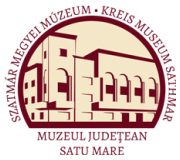Szőcs Péter Levente (szerk.): Căuaş. Ghid cultural şi istoric (Satu Mare, 2009)
Historical data
family becomes the full owner of a part of the village which they completed later as they purchased estates. Szántai-Becski nobles were not mentioned anymore among the owners of Căuaş village. In 1543, Károlyi family was also mentioned among the owners of the serfs in Căuaş, their property was confirmed by Sigismund Báthori, the prince of Transylvania, in 1588. The village was not remarkably rich in the Middle Ages. This is demonstrated by the fact that the royal tax in 1475 was 5 florins and 1 denarius, while Mecenţiu village paid the same year thrice this amount of money. The village remained deserted at the end of the 17th century after several attacks. The most important was one of the Ottoman attacks carried out before 1682. During the attack, one of the members of the Kávási family, lob, was caught and skinned alive in front of the Calvinist church. The inhabitants who had managed to stay alive left the village that was deserted until the beginning of the 18th century. A statistic made in 1720 showed that during that period, the village was inhabited by a noble, 20 serfs, seven daylaborers and eight privileged persons. Out of a total of 36 families of the village, 27 were Hungarian, and nine were Romanian. The overall number of inhabitants was quite high, amounting 324 persons. The most important owner of the village was the Vay family. They had a small estate in the area, but in 1779 they obtained by lease parts of Căuaş locality which was previously included in the domain of Tăşnad. Besides the Vay nobles, there were many other landlords with fewer possessions at the end of the 18th century. Throughout its history, until the contemporary Biserica ortodoxă din Căuaş Az érkávási ortodox templom The Ortodox church of Căuaş 19
